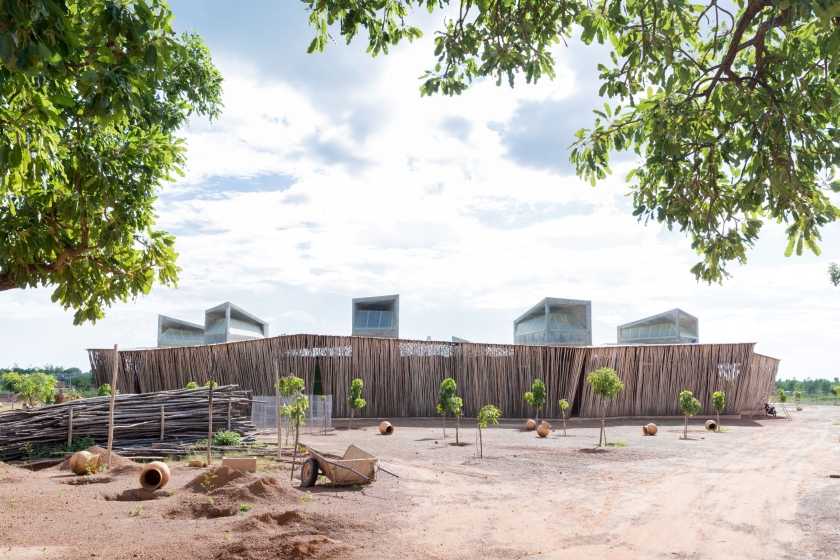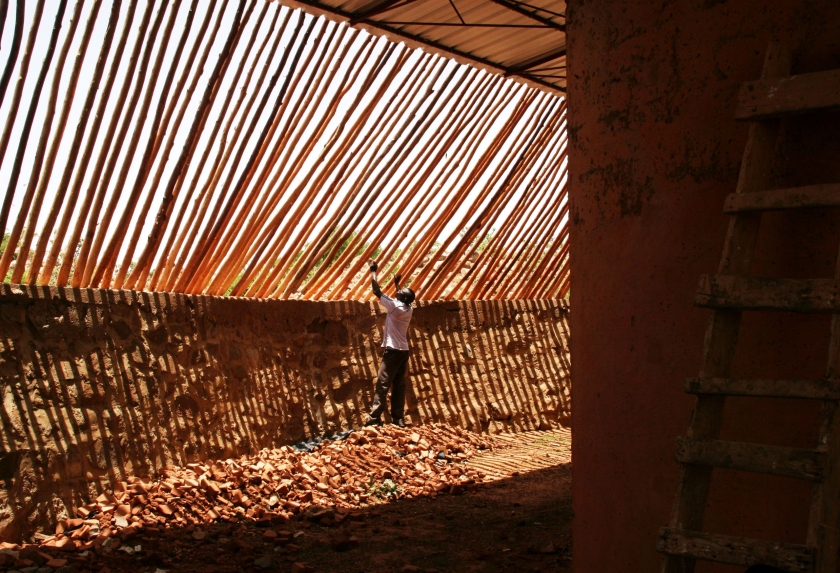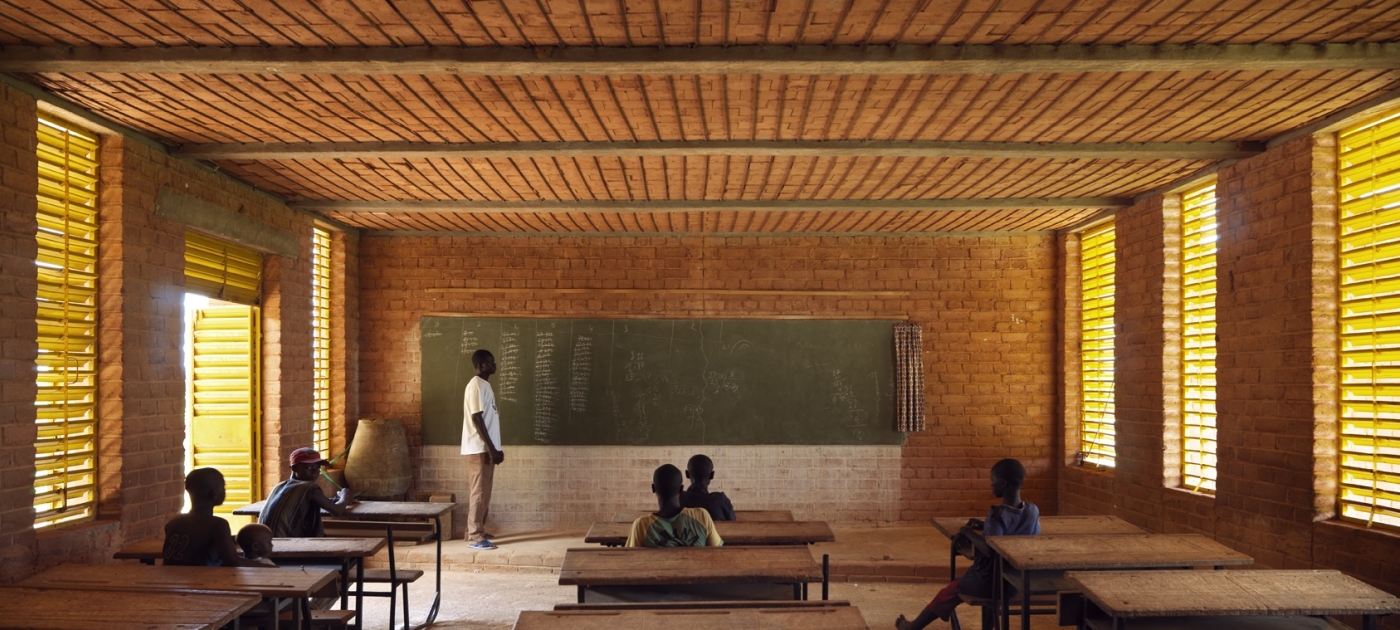Located in Burkina Faso the Lycée Schorge Secondary School shows what is possible when you mix traditional techniques and new materials. The school consists of nine modules arranged around a central courtyard that is protected from wind and dust. Each module is built out of locally sourced laterite which is cut into bricks and left in the sun to harden. These bricks absorb the heat during the day and radiate it at night.
 A secondary wall made of local eucalyptus wood wraps around the classrooms and creates various shaded spaces to protect students from stifling daytime temperatures. These techniques can help prevent the need for air conditioning, the long-range transport of building materials and concrete production. With 70 per cent of Africa’s building stock that will exist in 2040 still to be constructed, experts say these energy-saving techniques are crucial.
A secondary wall made of local eucalyptus wood wraps around the classrooms and creates various shaded spaces to protect students from stifling daytime temperatures. These techniques can help prevent the need for air conditioning, the long-range transport of building materials and concrete production. With 70 per cent of Africa’s building stock that will exist in 2040 still to be constructed, experts say these energy-saving techniques are crucial.
The continent accounts for roughly 6 per cent of global energy demand, with more than half of this coming from its buildings. Given that Africa’s population is expected to reach 2.4 billion people by 2050, with 80 per cent of this growth occurring in cities, it is clear that sustainability needs to be a core principle of all future buildings.
With the launch of UNEP’s 2022 Global Status Report for Buildings and Construction at the UN Climate Conference, the focus is on how Africa can manage this urban growth and increase the resilience of its housing stock while avoiding an increase in GHG emissions. It is a tall order, yet inspiration can be found in Africa’s past. Travel through Africa today, and hints of this past can be found everywhere, from Eswatini’s beehive huts to the Drogon cliff villages of Mali to the mud-brick mosques of West Africa.
Africa is rich in renewable energy sources, solar and wind, with nearly half of the planet’s total renewable energy technological potential. This is particularly important given the projected demand for air conditioning units as more people get access to electricity and temperatures rise.
 Africa has many natural, sustainable materials such as adobe, laterite, termite mound soil, timber, stone, bamboo, sand and dry vegetation. While traditional construction techniques include rammed earth, sun-dried bricks, compressed earth blocks, wattle and daub, cob, timber-framed construction, sandbag construction and thatched roofs.
Africa has many natural, sustainable materials such as adobe, laterite, termite mound soil, timber, stone, bamboo, sand and dry vegetation. While traditional construction techniques include rammed earth, sun-dried bricks, compressed earth blocks, wattle and daub, cob, timber-framed construction, sandbag construction and thatched roofs.
Ensuring sustainable materials are used is particularly important, given that according to UNHabitat, more than half the population (excluding in North Africa) live in overcrowded informal settlements, which are particularly vulnerable to the impacts of climate change.
You can read the original article at www.unep.org

